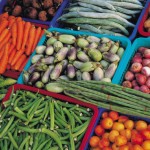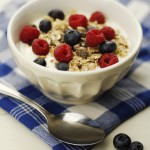Eggplant and butternut squash are in season and they happen to be two of our favorite vegetables. We couldn’t resist combining these two colorful veggies in a healthy recipe. Topping off this delectable and easy dish are goat cheese and basil. Goat cheese adds a creamy texture while the basil offers a slight peppery taste. Together, eggplant and squash provide fiber, vitamins (A, B, C), and potassium. Color your plate and serve these vegetables as a meal by itself or top the roasted eggplant and butternut squash with a savory piece of grilled filet or chicken.
Ingredients
• 2 lbs butternut squash, chopped
• 2 large eggplants, chopped
• 3 tablespoons extra virgin olive oil, divided
• sea salt to taste
• ¼ teaspoon cinnamon
• 2 tablespoons basil, chopped
• 2 tablespoons goat cheese, crumbled
Directions
1. Set 1 oven to 350 and another to 400 degrees Fahrenheit.
2. Line 2 separate baking sheets with foil.
3. Layer one with squash and the other with eggplant.
4. Drizzle both with extra virgin olive oil and lightly season with sea salt.
5. Sprinkle the squash with cinnamon.
6. Bake eggplant at 350 degress for 30 minutes.
7. Bake squash at 400 degrees for 40 minutes.
8. Combine vegetables; top with goat cheese and basil. Serve warm.
Recipe courtesy of Helen Agresti, RD. Helen Agresti is a Registered Dietitian with Professional Nutrition Consulting, LLC. She lives in Pennsylvania with her husband and 5 children. For more Nutrition advice and healthy recipes follow her on twitter @HelenAgresti. For more information and recipes, go to www.pronutritionconsulting.com
 Subscribe
Subscribe



